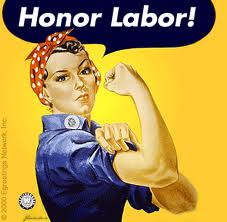![]() Well, no one responded to poor Susan Rudd’s questions about donor recognition societies from yesterday’s blog post. All I can assume is that the workload coming back from the long Labor Day weekend must have been intense. Never fear . . . I responded to Susan and provided a few nuggets of advice.
Well, no one responded to poor Susan Rudd’s questions about donor recognition societies from yesterday’s blog post. All I can assume is that the workload coming back from the long Labor Day weekend must have been intense. Never fear . . . I responded to Susan and provided a few nuggets of advice.
However, for those of you who read yesterday’s blog and thought: “Bah! Our donors don’t want recognition. In fact, they’re always telling us not to go through the trouble.” Let me assure you that what donors say and what they mean are very different things. In my experience, many of those donors who protest when it comes to recognition and stewardship are really saying: “Don’t engage me because my plans for giving to your agency are short-term.”
As I said yesterday, I’ve found that donor recognition societies are oftentimes misunderstood for “name-only,” donor giving levels that are listed in an annual report, newsletter or website. Unlike giving levels, donor recognition societies are ALIVE and a place for your donors to engage with your organization’s mission as well as with other donors of like-mind.
One great example is what the University of Michigan’s alumni association is doing with its members (and when I say members you should read it either as “donor” or “prospective donor”). Every summer the alumni association offers its members the opportunity to sign-up for 11 different sessions of summer camp. They call this program “Camp Michigania“.
I just spent last week vacationing with a number of retirees in Michigan on the shores of Saginaw Bay. One evening they couldn’t stop talking about their camp experiences. While they participated in typical camp activities (e.g. swimming, arts & crafts, etc), they mostly loved the “Faculty Forums” where they could hear U of M staff talk about various topics pertaining to their professional research.
Do you know what else I heart this group chattering about as they reminisced about camp? They were talking about the scholarships funds they were starting (or thinking about starting) as well as the planned gifts they were contemplating.
I can honestly say that I haven’t seen a more engaged and excited group of donors and prospective donors. And the amazing thing to me was that there wasn’t a single resource development employee from the university in the room stirring those conversations.
The moral to this story is: stewardship and cultivation activities that “ENGAGE” donors is like the fountain of youth for all resource development programs. It brings things to life. It makes fundraising and solicitation so much easier. It can breathe life into your planned giving program.
While Camp Michigania isn’t a textbook example of a donor recognition society, I really like what the Indiana University Foundation has done in this area. Click here to see examples of their donor recognition societies. I suggest you pay special attention to how they use “courtesies” to engage their donors after the gift. What IU is essentially doing is infusing cultivation and stewardship opportunities into these recognition vehicles.
Please use the comment box below to share links to other good examples of donor recognition societies that you’ve found. Does your organization use donor recognition societies? If so, how do you use them? Do you infuse stewardship opportunities into these structures? What has worked well and what hasn’t?
Tomorrow I will try to share other good examples of donor recognition societies from outside the education sector.
Here is to your health!
Erik Anderson Owner, The Healthy Non-Profit LLC eanderson847@gmail.com http://twitter.com/#!/eanderson847 http://www.facebook.com/eanderson847 http://www.linkedin.com/in/erikanderson847









